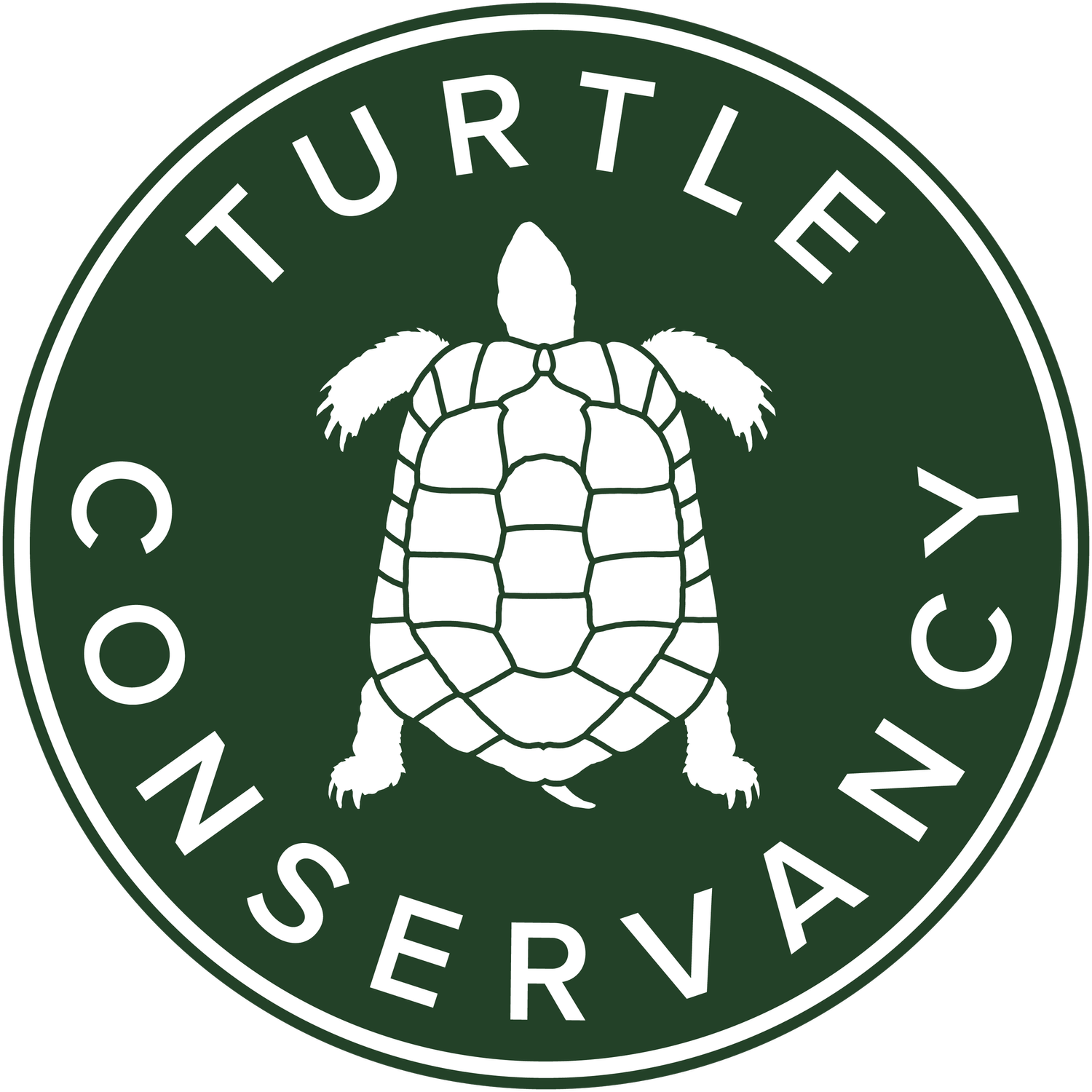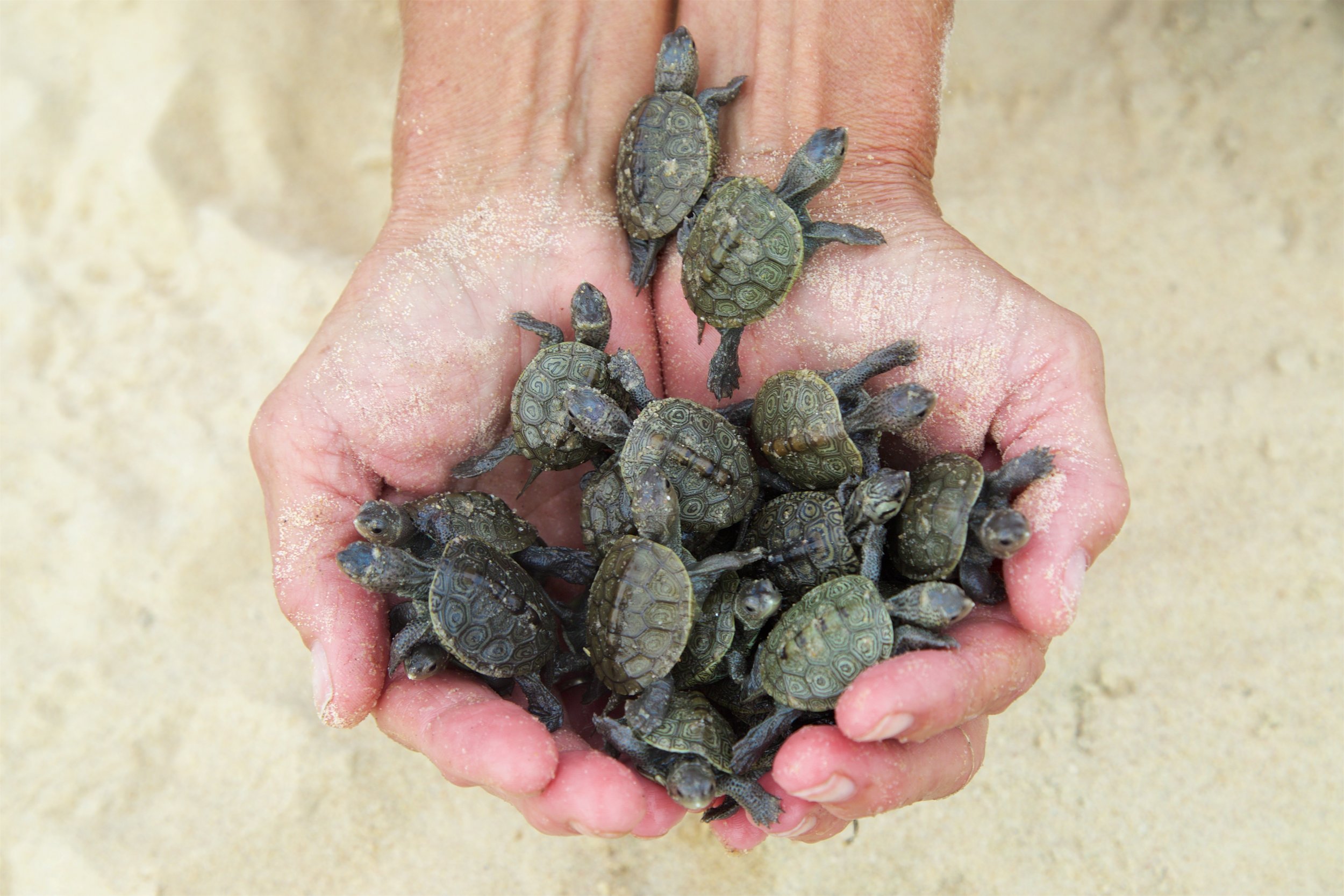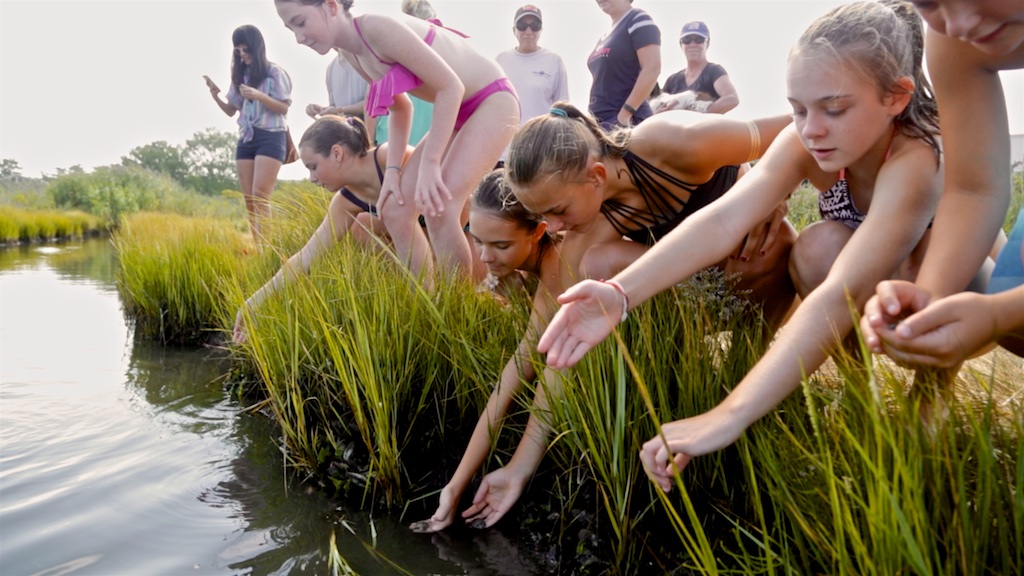Terrapin Nesting Project
The Turtle Conservancy is a proud partner of the Terrapin Nesting Project on Long Beach Island, New Jersey!
The Terrapin Nesting Project is a grassroots organization founded by Kathy Lacey in 2011 with the ongoing support of the Sierra Club. The aim is to restore terrapin populations on Long Beach Island by protecting nests and releasing hatchlings back into the bay. Northern Diamondback Terrapins (Malaclemys terrapin terrapin) are native to the East coast of the United States and over the past two centuries have seen their numbers dwindle precipitously.
Through the grassroots effort of Lacey and her team of volunteers, terrapin numbers are on the rise. In 2017 alone, over 3,000 hatchling terrapins were released back into the wild. In 2018, TNP Leeds Point was added to the Terrapin Nesting Project. This program, led by Casey Leone, is helping females reach nesting sites safely across roads and tagging individuals with microchips to help identify population dynamics in the region!
How you can help!
If you find a terrapin injured OR nesting, Or ARE INTERESTED IN RE-BEACHING, PLEASE call or text Kathy Lacey at (215) 495-2431!
Sign-up to be notified of all the latest terrapin news and volunteer opportunities!
Volunteers have the chance to patrol beaches and yards for nesting females, help turtles cross roads, and help monitor various sites for predators. You can volunteer for a weekend or all season! Volunteers receive a discounted rate on t-shirts and the "Adopt-a-Nest" program. (2 day volunteer minimum)
Major Threats
Housing Developments:
The addition of bay front property has displaced many of the traditional nesting sites for female terrapins. Additionally, the sandy soil has been replaced with clay and decorative rocks, to prevent erosion. This substrate is unsuitable for turtle eggs, and many nests fail to hatch or drown as a result.Roads are another obstacle the nesting females and subsquent hatchling must traverse in order to safely reach their destinations. During the nesting season, many females are needlessly run over by speeding cars and trucks.
Introduced Predators:
The raccoon and American crow have been largely introduced onto Long Beach Island over the past 50 years. Urbanization and development of the island has enabled these city saavy creatures to thrive on pet food, garbage, and hand-outs from local people. Unfortunately, these animals also heavily predate on turtles and their nests. Crows will even wait patiently next to nesting females and eat the eggs immediately after they are laid.
Crab Traps:
Crab traps without the ability for turtles to surface are a death trap for terrapins. The turtles are drawn into the traps due to the smell of bait and the sight of crabs, one of their favorite foods. Turtles can easily drown if caught in one of these wire traps without the ability to breathe or escape. Please contact us if you see traps in need of bycatch reduction devices.
Poaching:
These animals are often taken home as pets by visitors and tourists, without realizing they require special care, such as a large aquarium and brackish water. More devious poachers will take nests and adult animals home to supply the illegal pet trade in the US and overseas.
How We're Helping
Hatcheries
The Terrapin Nesting Project operates two hatcheries where turtle eggs are relocated. Eggs must be relocated from roadways, yards, and public areas because often they are laid in artificial substrates or high traffic areas. Imported clay and rock yards can suffocate or even drown eggs during summer rains. Every nest is carefully marked with a GPS coordinate, excavated, and moved to a secure, locked hatchery protected from predators. Once the eggs hatch in about 60 days, the baby turtles are given freshwater to hydrate and then released into the wild within 48 hours.
Education
Educating local citizens on the island and tourists is a major role of the Terrapin Nesting Project. We try hard to inform the public on the lifecycle of the Diamondback Terrapin and when to be on the lookout for nesting females or hatching turtles. Beachgoers have become well versed to contact someone on our team if they find a turtle in their yard or public space. Additionally, through our Adopt-a-Nest program, we have been able to reach hundred of children and families to explain why terrapins are vital for the health of the bay. Terrapins play in integral role as a predator of crustaceans and mollusks, which supports healthy plant and fish life and has helped restore the seagrass that used to dominate the region.
Road Patrol
Just visiting? You can still help!
Our volunteer program is our greatest asset. During peak nesting season, volunteers can aid in looking for turtles crossing the road or turtles trying to lay eggs. This means even if you only have a day or two to donate, you can still make a HUGE difference!
"Re-Beaching"
As our hatcheries grow each year, we need to come up with alternative methods to support our nesting terrapins. In an effort to have more natural nesting, we attempted our first "re-beaching" of people's yards this past year. The concept is simple - donate a portion of your current yard for a small sand dune. Terrapins prefer to nest in sandy soil over artificial substrates. By strategically constructing sandy nesting areas, we can offer them a place to easily and safely lay their eggs. In our first year, we had over 100 nests laid on just two "re-beached" yards. Homeowners have been so thrilled with the experiment, they have agreed to beach more of their yards and we have four more families line up for "re-beaching" next year.
The addition of a nesting ground to your yard is both environmentally friendly and beautiful. By "re-beaching," you are helping local wildlife, supporting the health of the bay, and your family gets a unique experience and memories that will last a lifetime. If interested, please click the button below for more information. (We request a minimum of 100 square feet.)





































